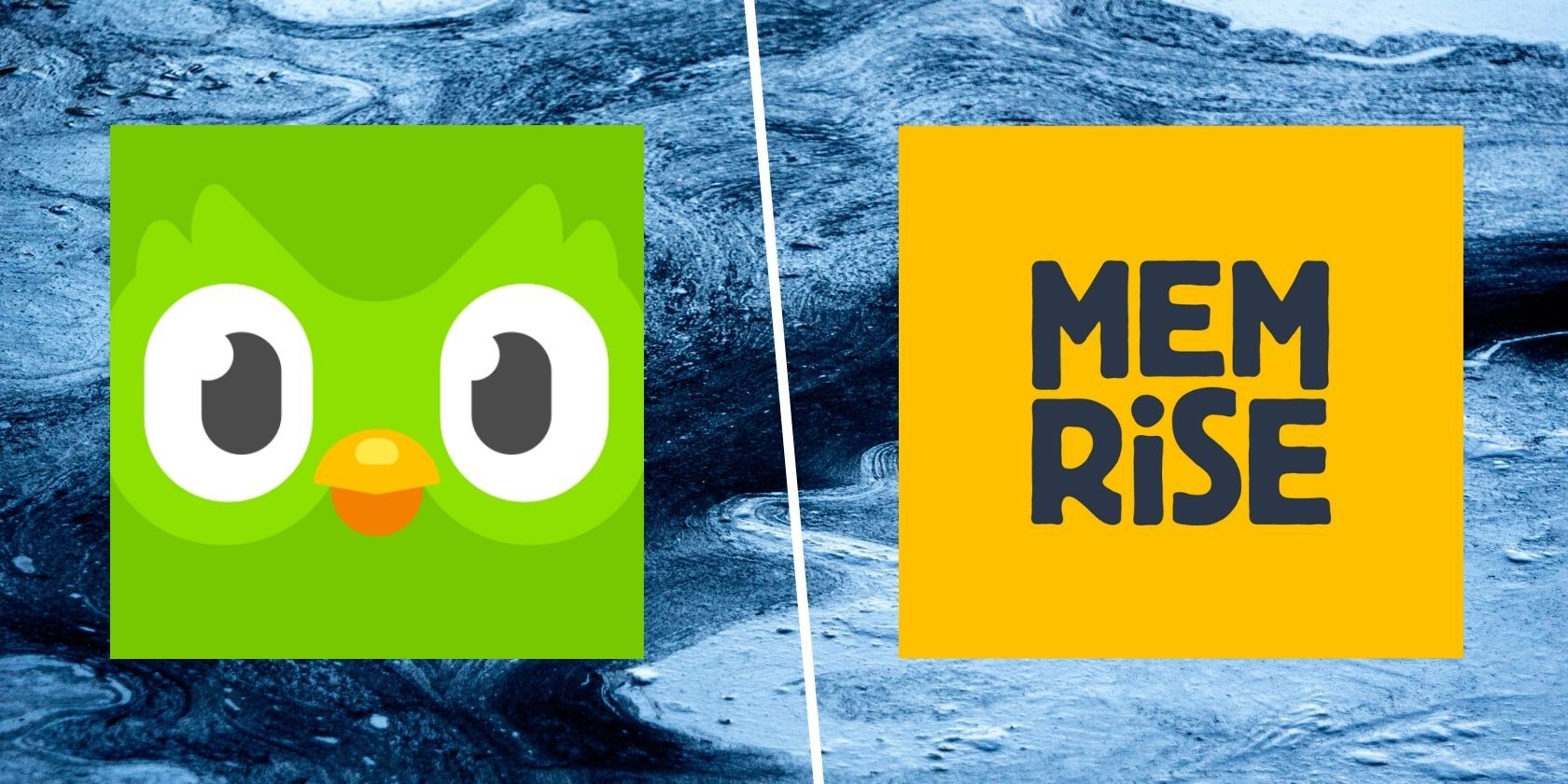If you're in the process of learning a new language, you've likely come across helpful apps like Duolingo and Memrise. These language learning apps have both a mobile and desktop app, which makes it easy to continue your learning from wherever you are.Duolingo has over 130 million users, and Memrise has over 60 million users, but popularity might not be due to the effectiveness of the app, but rather the marketing strategies employed by each. Let's take a look at exactly what the differences are between Duolingo and Memrise, and see which one would be better for your language learning journey.
Available Languages
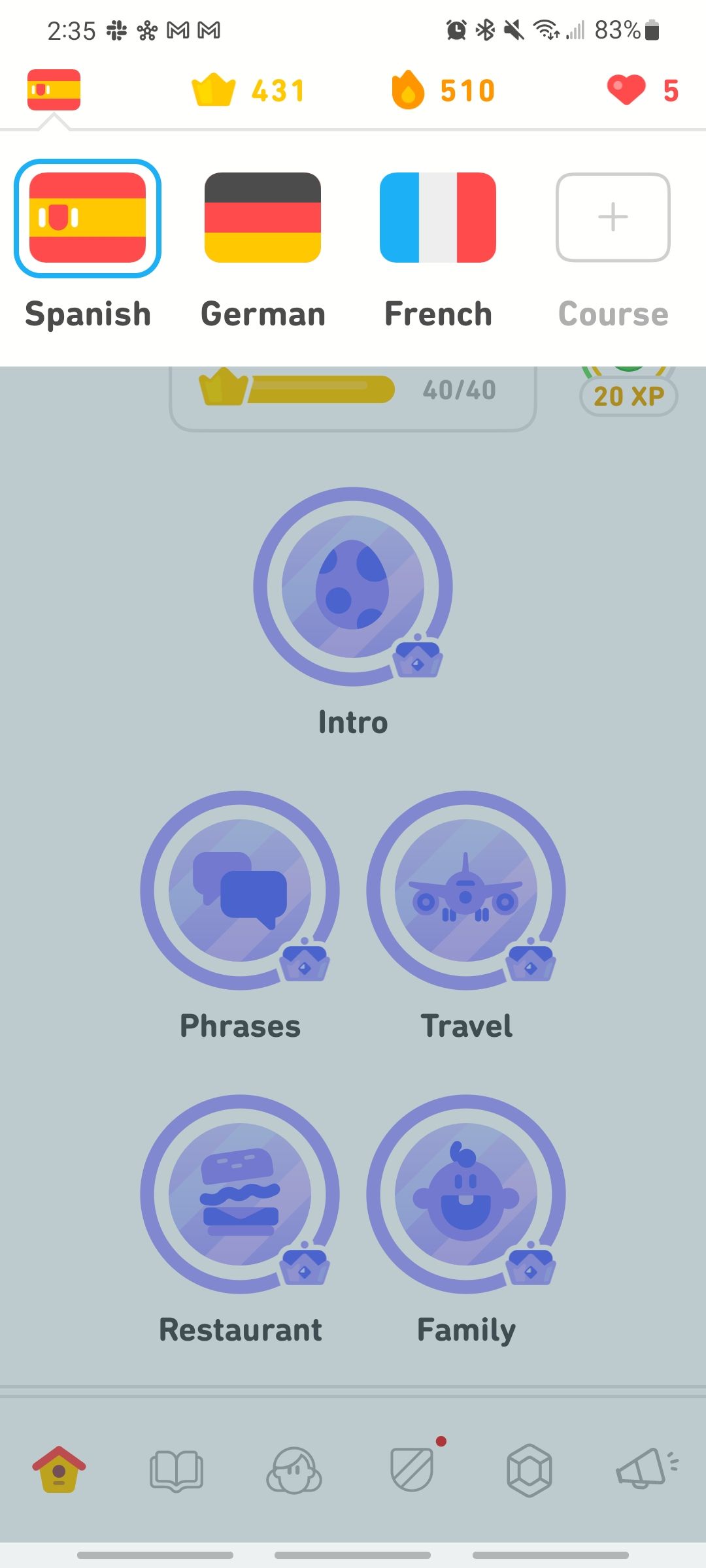
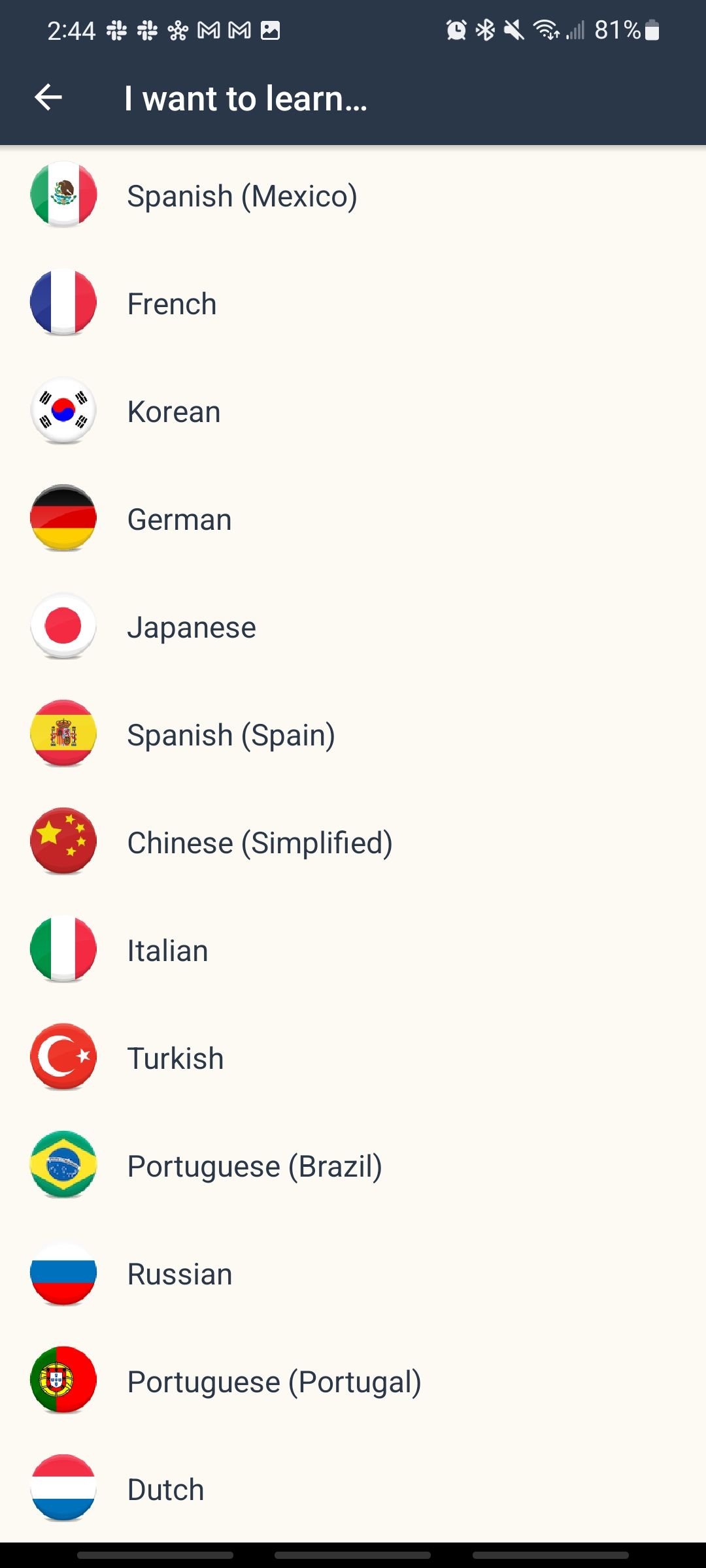
The languages available to learn on Duolingo vary based on which language you're trying to learn from. For example, English speakers have the most availability when it comes to learning new languages, with 38 languages to choose from currently. If you're a French speaker, however, you only have six different languages available to you to start learning.
English speakers have the ability to learn popular languages, including Spanish, French, Japanese, German, Korean, Italian, Hindi, Chinese, Russian, Arabic, and more. Duolingo also offers learners more niche fictional languages for fun, like Klingon and High Valyrian.
Memrise, on the other hand, only offers 23 languages, all of which are real (not like Klingon or High Valyrian). A few of the most popular languages on Memrise for English speakers are Spanish, French, German, Korean, Russian, and Japanese. When switching the spoken language from English to French, Memrise still offered most of the same languages.
Learning & Lesson Structure
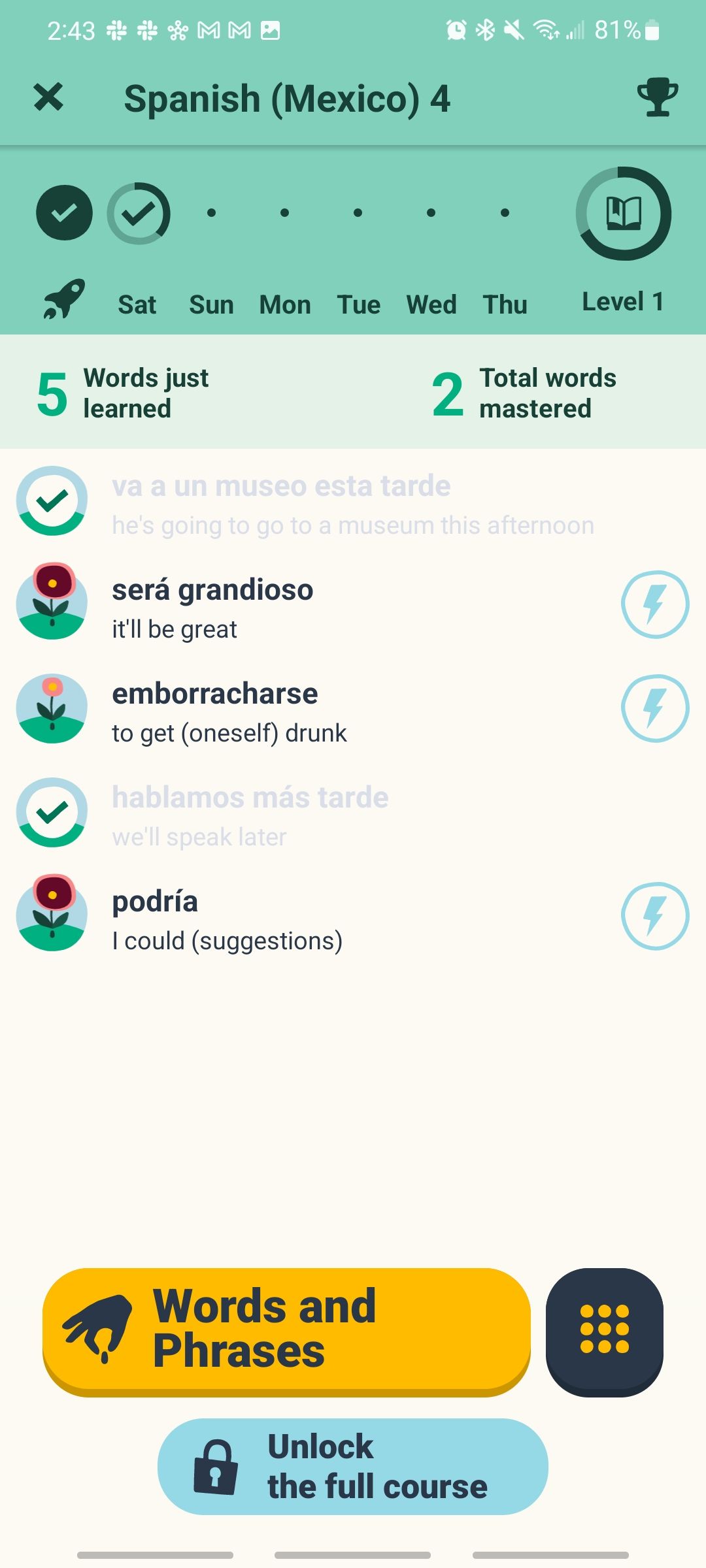
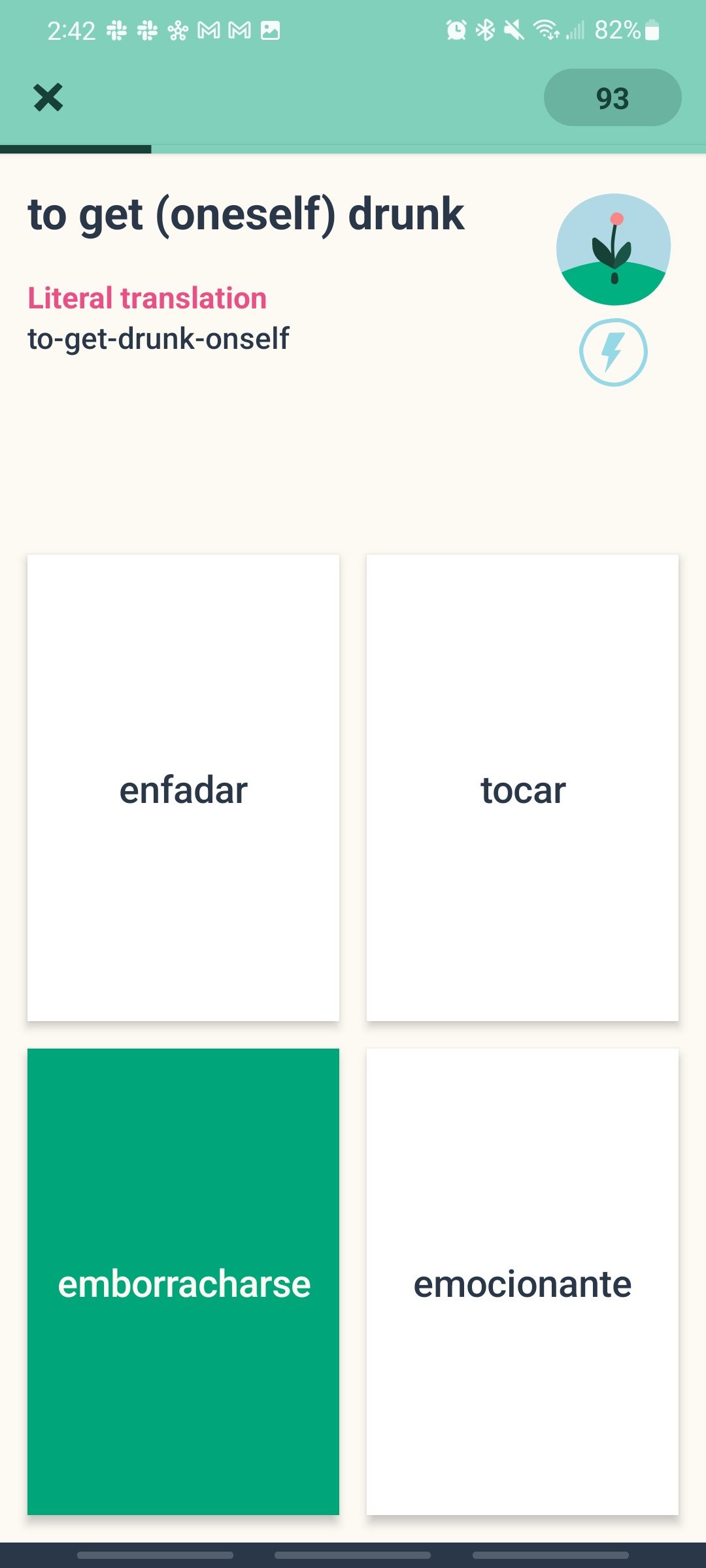
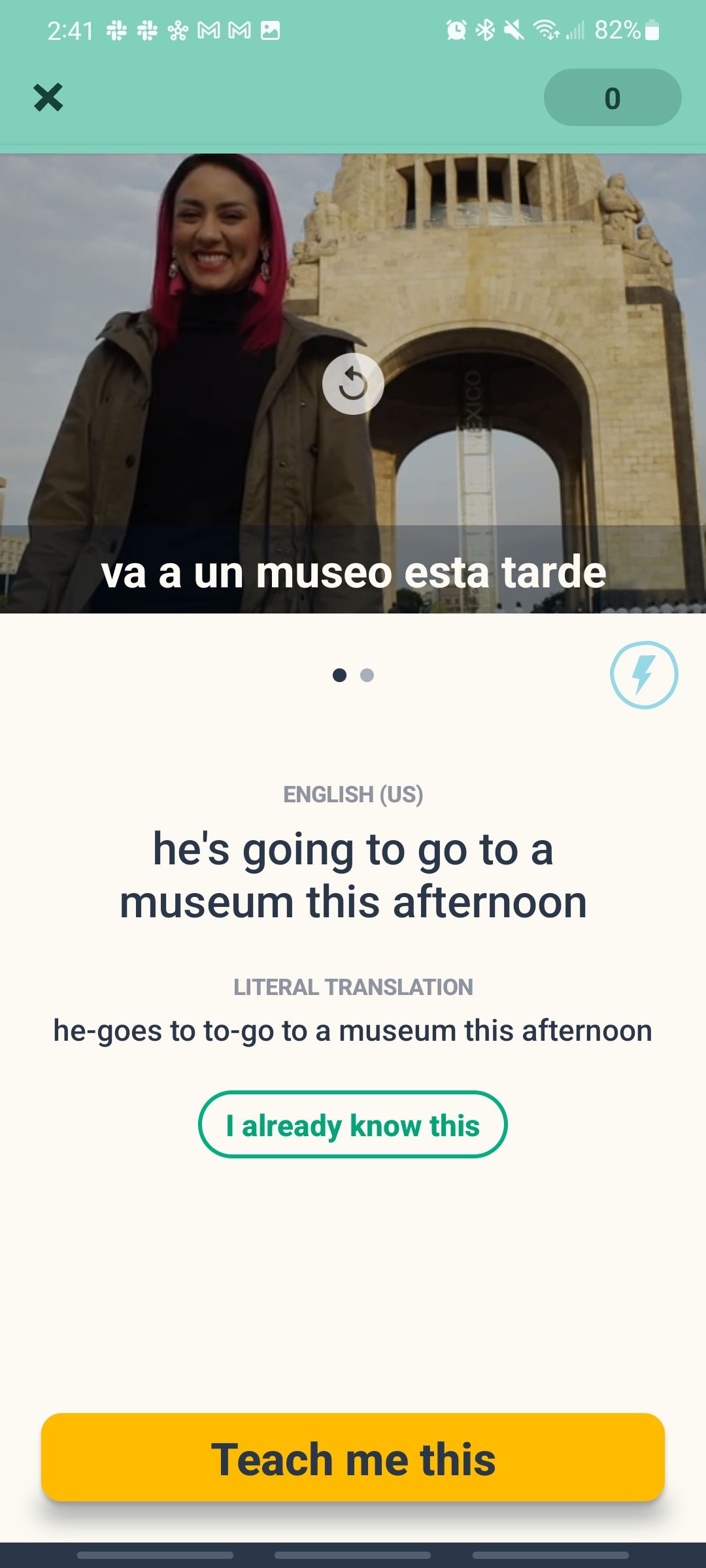
Memrise employs a flashcard style of learning for words and phrases. When you start a new course, you'll see a series of words and, as you progress, more complicated phrases. You can tell Memrise that you already know that word or phrase, or you can tap the Teach me this button.
Most words and phrases in Memrise are accompanied by a video of a native speaker saying that word or phrase. Being able to see a video of a native speaker helps you learn how to pronounce the word correctly as well as associate an action or picture with the word. Along with the helpful video, you can see a literal translation and a loose translation for each word.
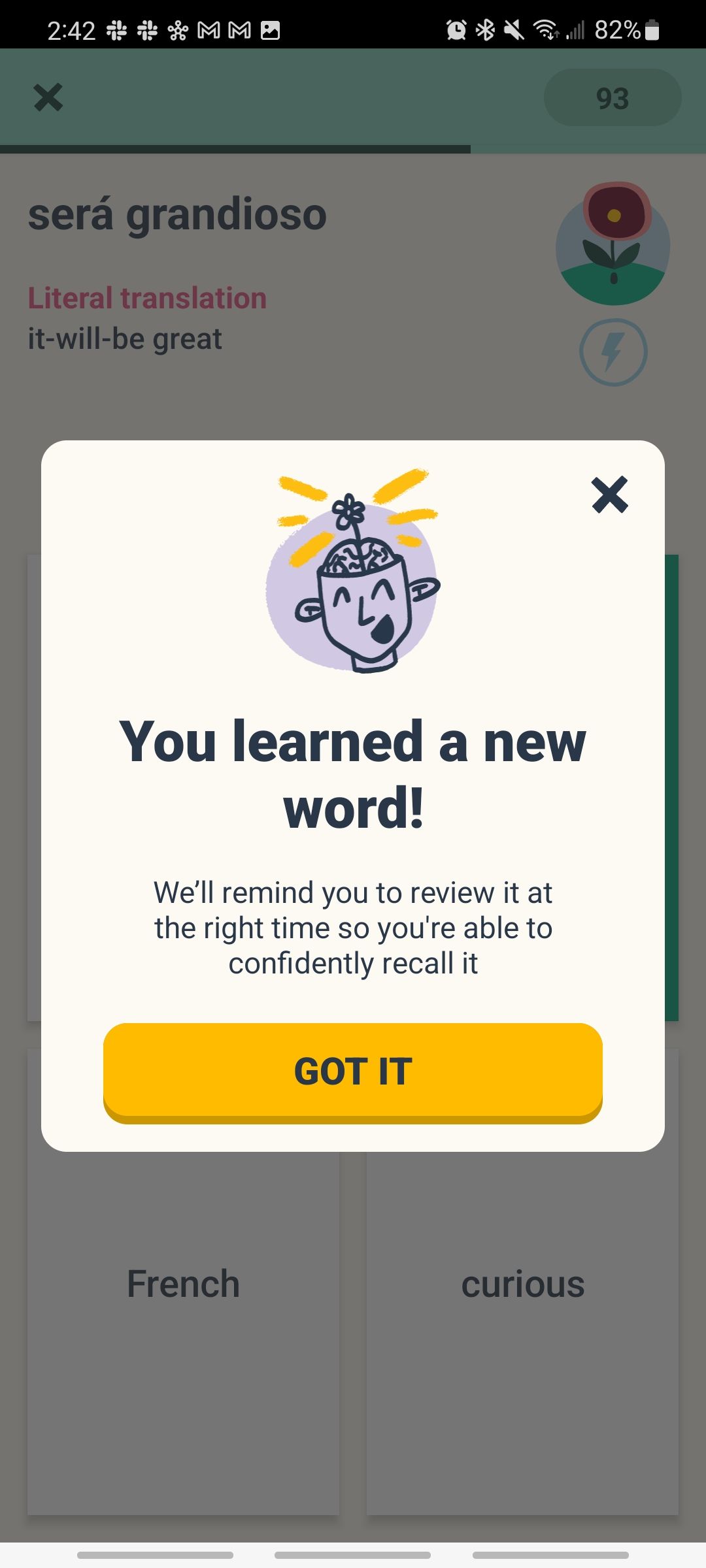
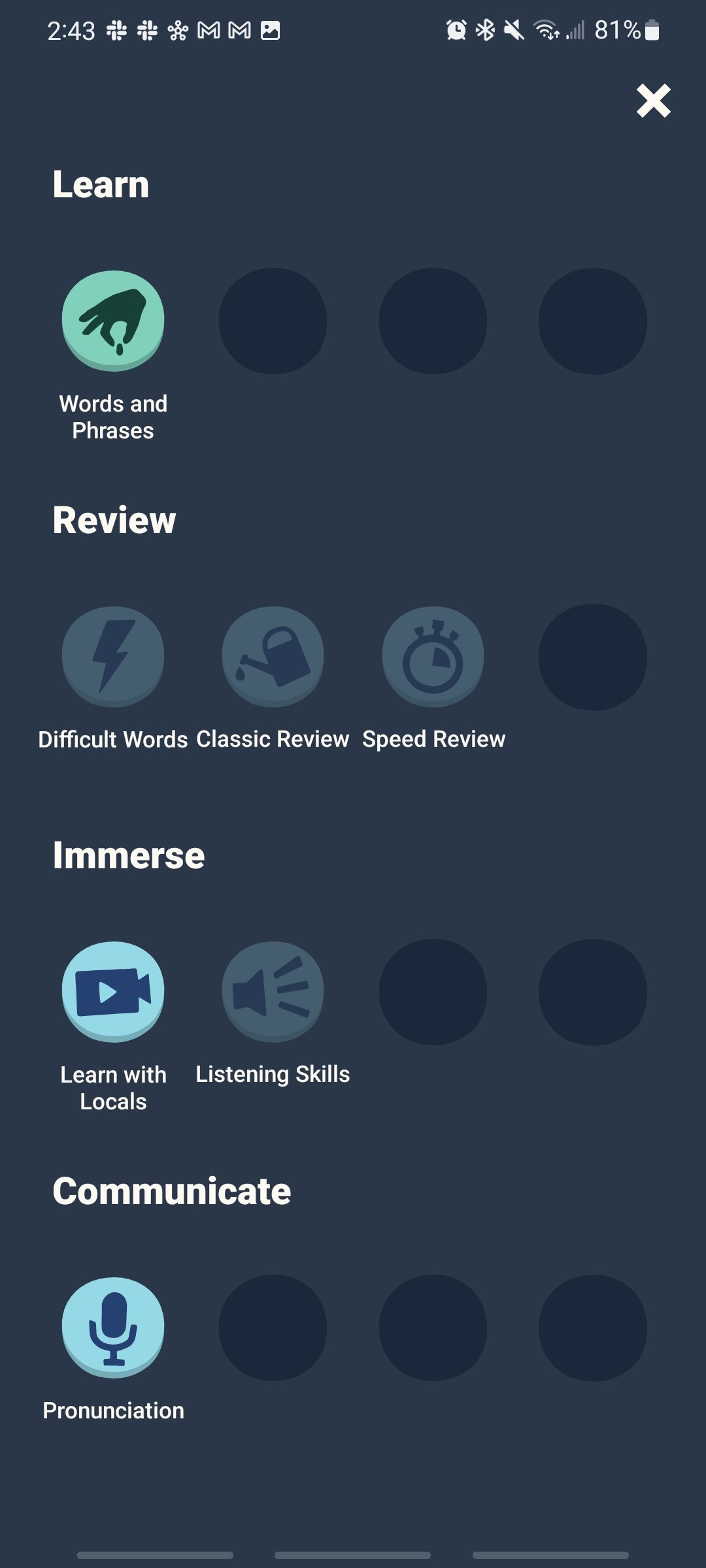
Once you've learned quite a few words and phrases in the Learn section, you can check out the Review, Immerse, or Communicate sections to further your knowledge.
- The Review section lets you test all the knowledge you've learned up to that point, with a Classic Review or a Speed Review. Then, you can also choose to only review words that you've had difficulty with before.
- The Immerse section tests your listening skills and has a “Learn with Locals” feature that allows you to hear how native speakers would respond to certain situations.
- Lastly, the Communicate section helps you with your pronunciation skills.
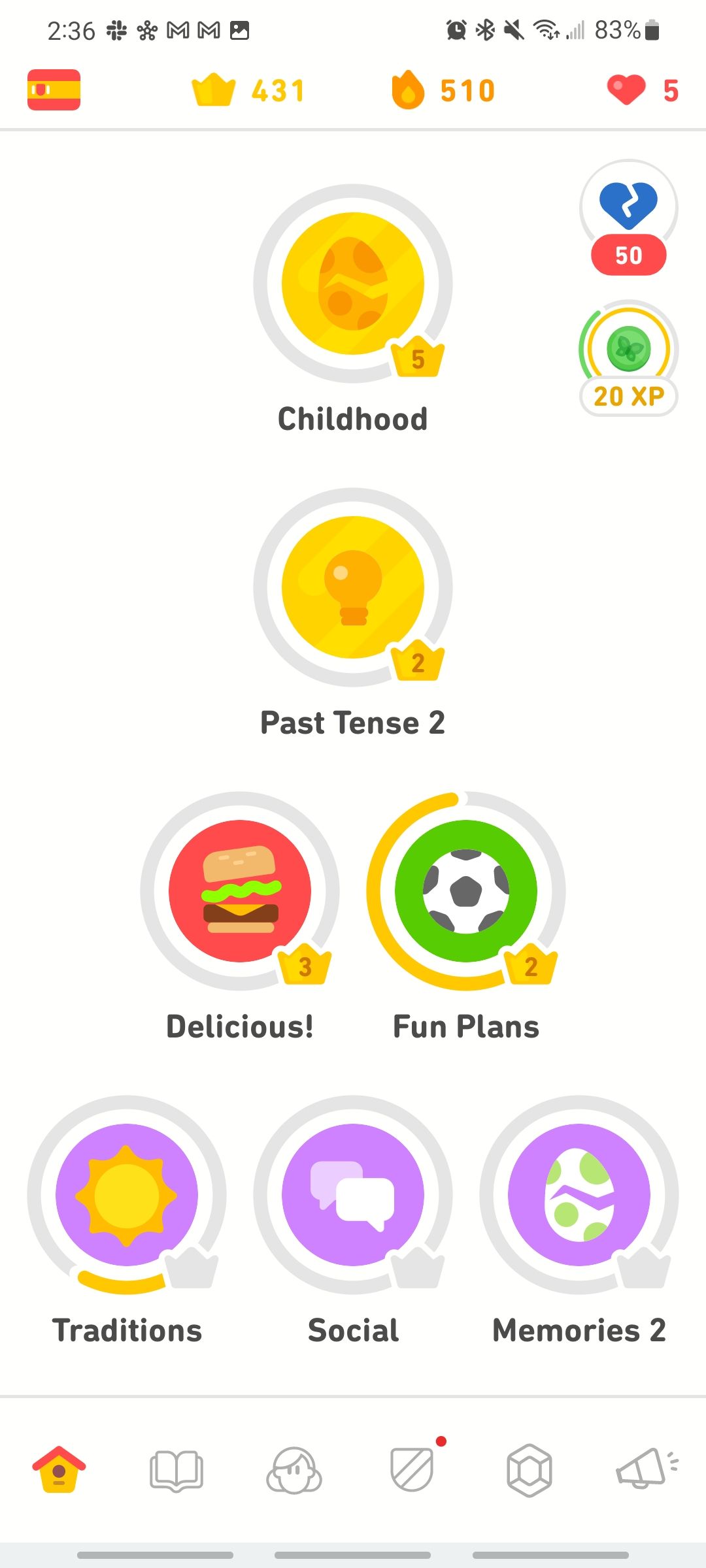
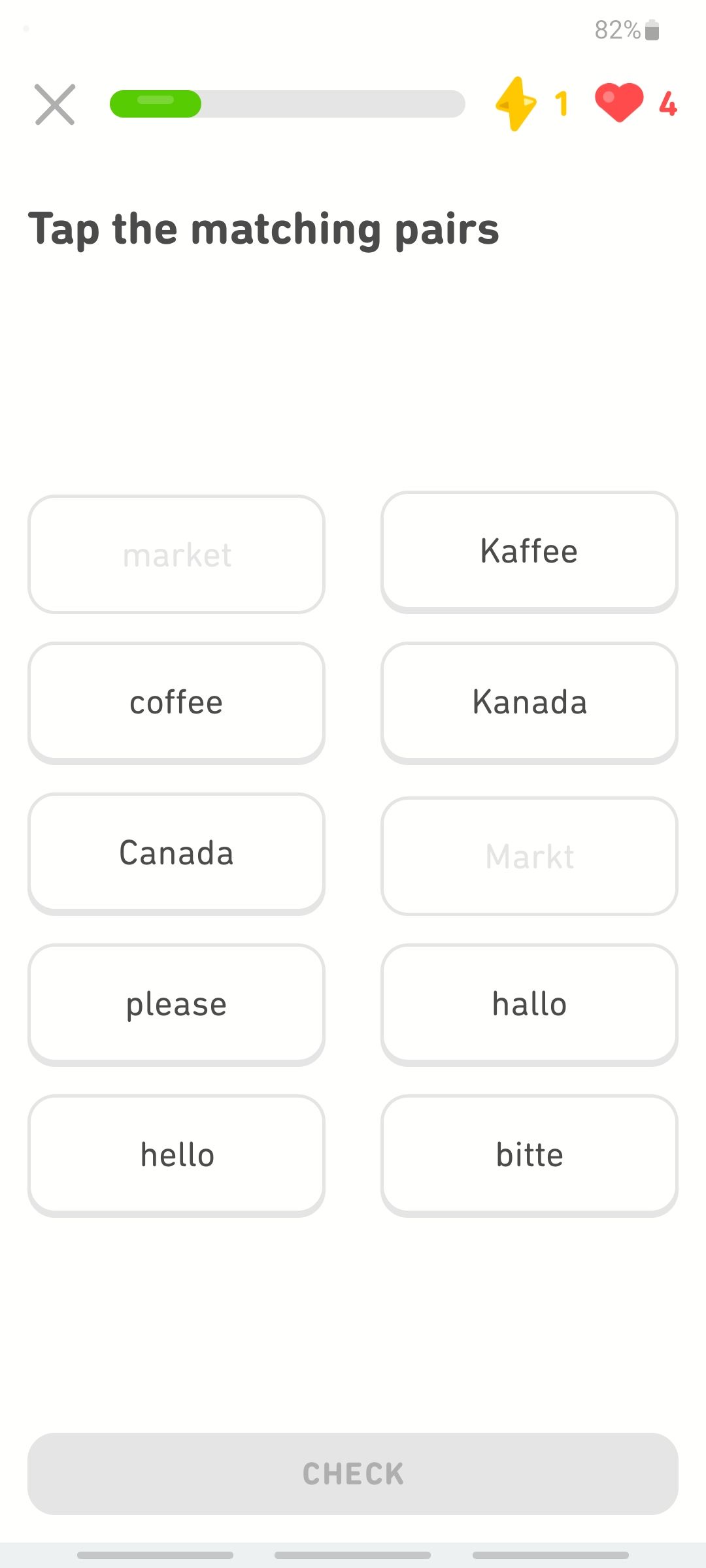
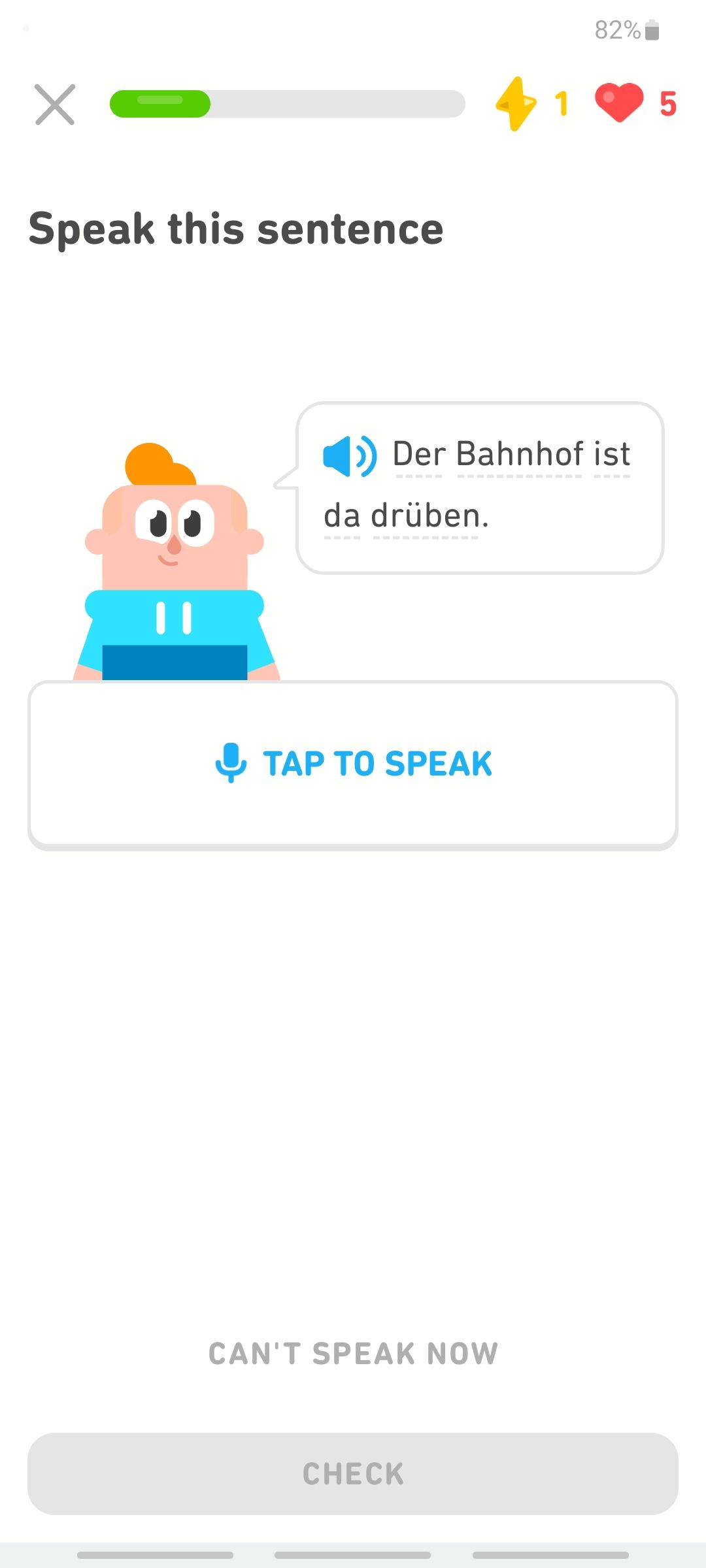
Duolingo's app presents you with a more straightforward learning approach. Instead of learning individual words and phrases, Duolingo lays out an entire course all at once with vocabulary and grammar mixed in. Although you can see the entire course when you start learning a new language, certain lessons are locked until you complete the previous modules.
Each language course in Duolingo has a certain number of units, which you can choose to test out at the start of a course if you already have some previous knowledge. Otherwise, you're starting from Unit 1 and working your way to the bottom! At the end of each unit, there's a checkpoint quiz that you have to pass in order to unlock the next unit.
Most modules within a unit have five different levels until mastery. Each level has about four to six lessons. In other words, there's a lot to learn before you move on! This repetition is incredibly helpful, and you get to hear words and sentences spoken to you as well as repeat them back to ensure you're pronouncing everything correctly.
Typically, when you first start a module, the lessons will be a lot simpler. In the first level, you'll likely see a lot of individual words you have to practice through repetition and matching. Then, as you progress through the module, you'll start seeing complete sentences and testing your grammar skills.
Each module also comes with a Tips section, where you can read through a short lesson from Duolingo. It'll go over everything you'll be learning in the module and explain the difference between your native language and the language you're learning.
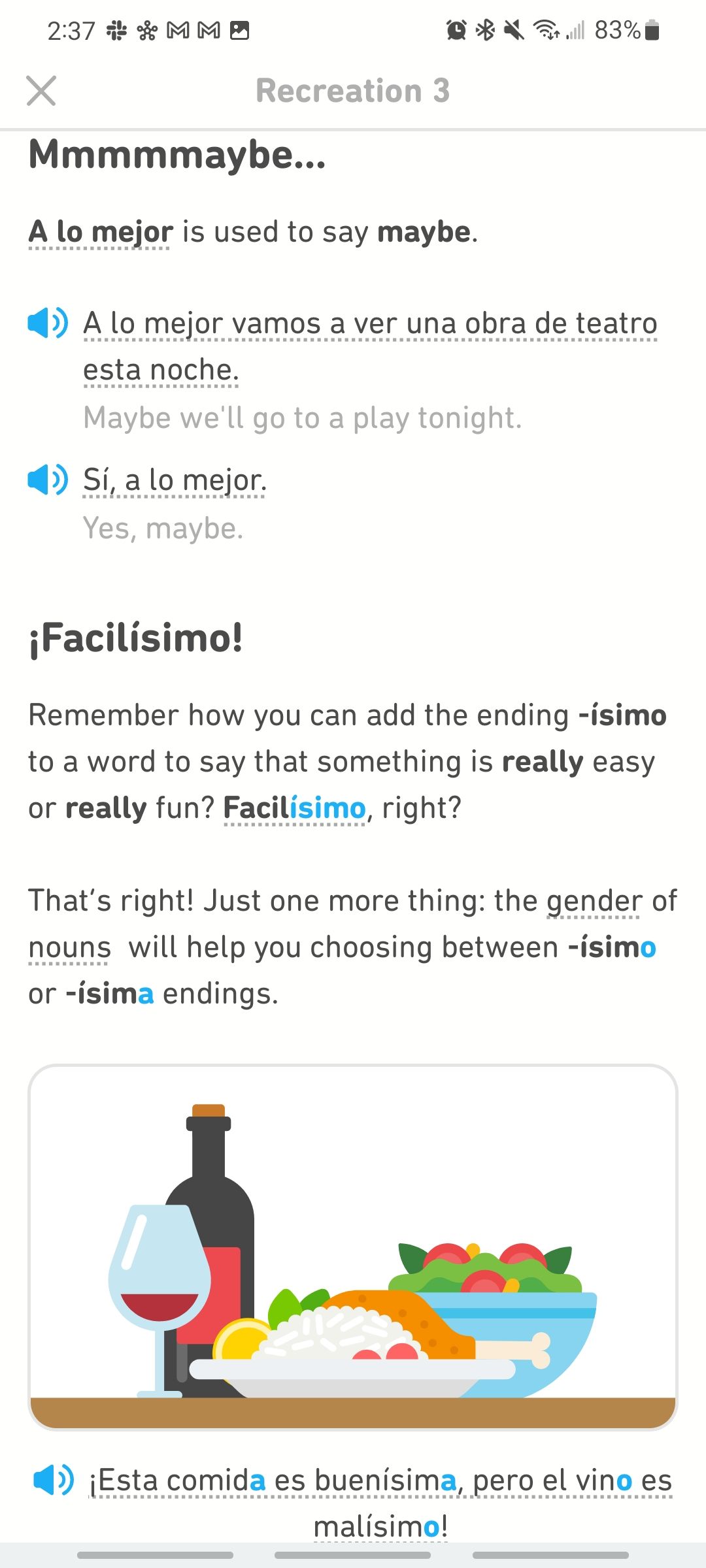
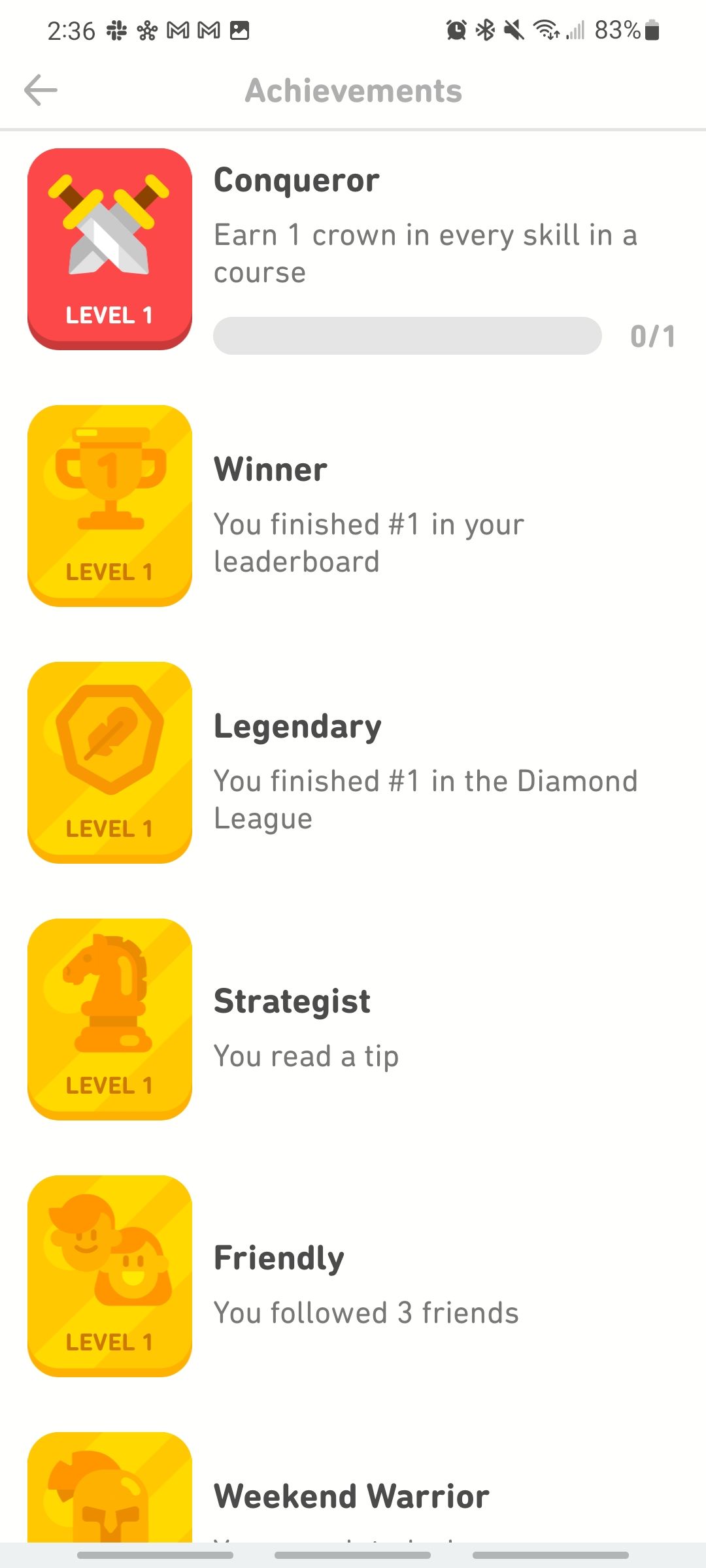
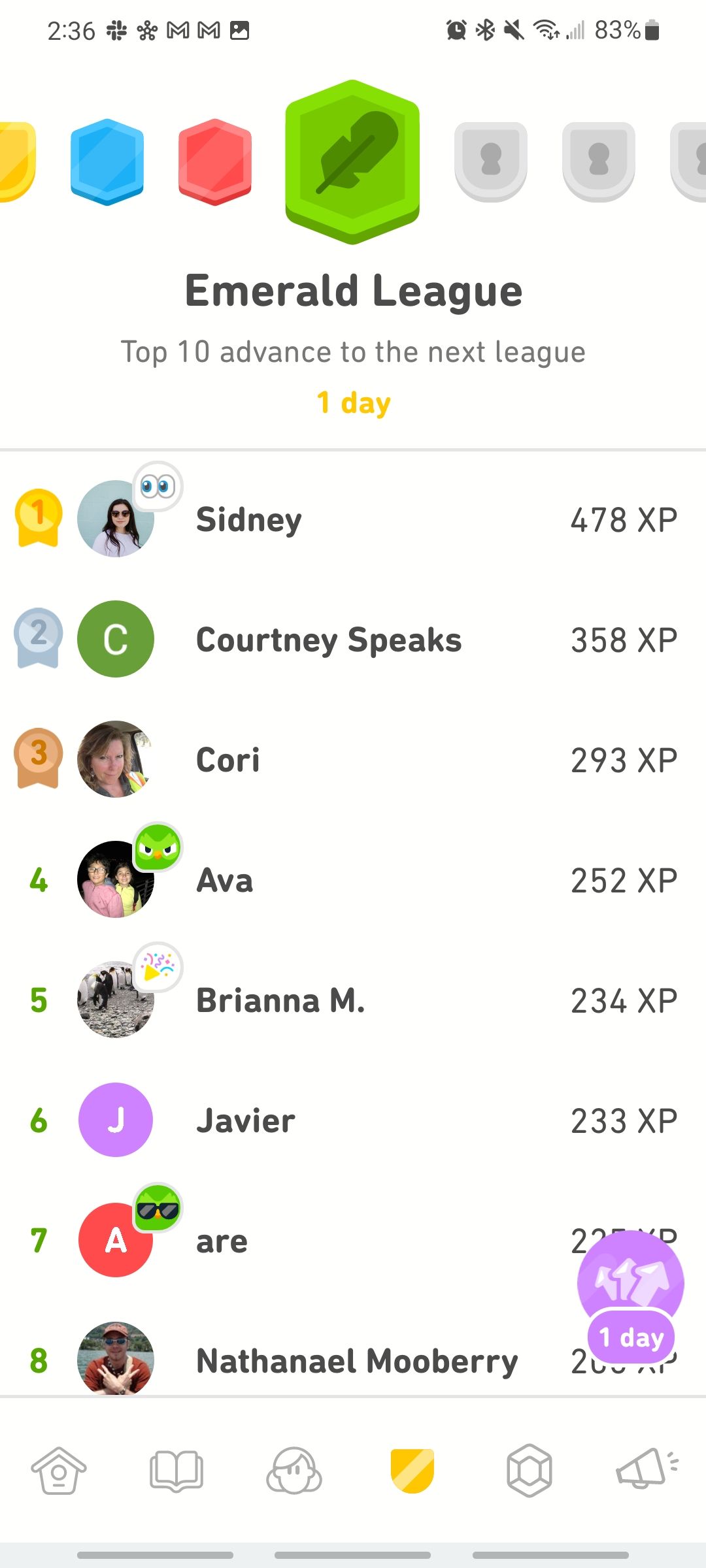
Duolingo also inspires users to continue learning through the gamification of the app. If you're not sure what gamification is, it's essentially when you attach achievements and other gamified elements to something that isn't traditionally a game, like learning a language, to keep you coming back. Here are a few gamified elements in Duolingo:
- Daily Streak: You have to do at least one lesson a day in order to keep up your streak on Duolingo. You can purchase a Streak Freeze from the in-game store with gems you earn from completing lessons.
- Achievements: The game has fun achievements that inspire you to learn, like keeping up a streak for 365 days, learning 2,000 words in a new course, completing 100 lessons with no mistakes, and more.
- Experience: Every lesson you complete earns you experience. There are experience challenges every month, and you can check on your friends to see how much experience they have compared to you.
- Leagues: Every week, you're thrown into a league with other players. If you gain enough experience to be in the Top 10 (out of 30 people), then you're advanced to the next league. If you land in the Bottom 5, you're demoted to the previous league.
Online Forums & Communities
When it comes to online forums, Memrise has a leg up. Duolingo used to have a healthy dose of language data and help in its online forums, but as of March 22, 2022, these helpful forums are disappearing.
Certain community-building features on Duolingo will remain, like the ability to add friends and compete with other language learners in leagues every week. These features certainly encourage a sense of camaraderie amongst Duolingo users, but the lack of forums to consult with when you have a burning question is disappointing. You can still consult unofficial forums like r/duolingo, but it's not monitored by Duolingo.
Memrise, on the other hand, has an extensive user forum that covers all sorts of topics. In the Memrise forum, there are four main categories to explore: Welcome to the Forum!, Official Memrise Courses, Memrise Bug Control, and Community-Created Courses. In each of these categories, there are a ton of sub-categories to explore, all with user-generated comments and questions.
Pricing
Duolingo's premium plan, Duolingo Plus, offers quite a few features for a monthly or yearly subscription fee. With Duolingo Plus, you'll see no ads, be able to complete as many lessons as you want to with no restrictions, and take as many progress quizzes as you want.
If you go month-by-month, it'll cost you $12.99 every month. Paying yearly gives you a massive discount ($79.99 per year), averaging out to just under $7 per month. Duolingo also introduced a Family Plan option for two to six members that's $119.99 per year; even if you only have two people using this plan, it still works out to be a better deal than an individual plan.
The Pro version of Memrise is more affordable than Duolingo Plus, and gives you access to all of its language courses, over 30,000 native speaker video clips, and the ability to download any courses to use offline.
You can pay a single lifetime or subscription fee that renews monthly or annually. The lifetime fee is $119.99, equivalent to two annual subscriptions. If you pay monthly, it's $8.49 per month; and if you pay annually, it's $59.98 per year (though Memrise often offers a half-off deal for its annual subscription).
Duolingo vs. Memrise: Which App Is Better For You?
To be honest, the apps would be awesome if used in tandem. Memrise helps you expand your vocabulary, while Duolingo helps you gain the foundations of grammar and sentence structure in a new language.
If you're only going to use one app, we would recommend Duolingo, as it gives you a greater overview of a language and helps cement the basics. But if you want to expand your learning as you progress through your Duolingo course, downloading Memrise will help you become more fluent.

